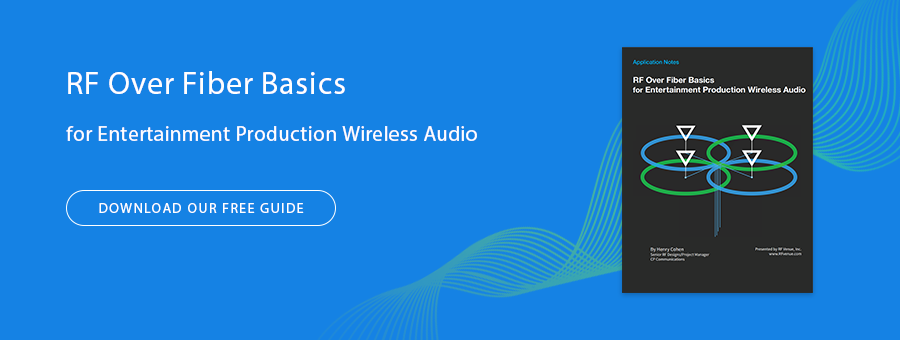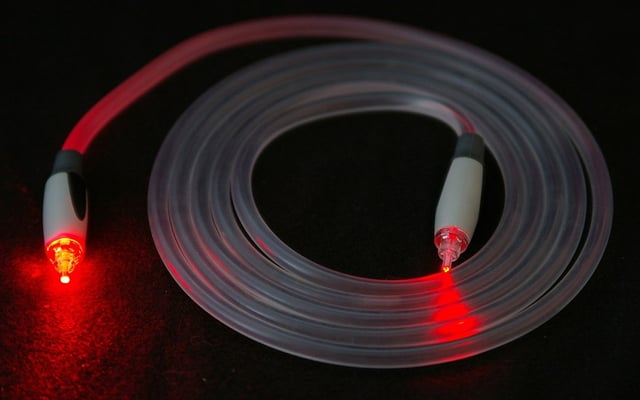
Fiber cable offers many benefits over copper coax. Fiber transmits signal much farther than coax. Much, much farther, with almost no loss inside the cable. Our newly released RF Optix RFoF system can convert radio waves into optical signal and distribute up to a kilometer with very little transmission line loss. Fiber is also less expensive since it uses plastic and glass, instead of copper and silver, as a transmission medium. And it is less likely to become damaged from routine use.
But the one thing you need to watch out for when using fiber is cleanliness. The connecting faces of fiber optic lines need to be kept scrupulously clean at all times, which is quite simple, but it bears repeating: clean your fiber!
Optical transmission works by sending pulsed beams of light through a thin wire of transparent material like glass or plastic, which when surrounded by another material with slightly different transmission characteristics causes a trap like effect, reflecting light around inside perpetually.
In singlemode (one directional) fiber, like the kind used with RF Optix, the diameter of the entrance pupil is narrow—as narrow as a few micrometers across. If dirt, grime, oils, or residues are present over the pupil signal loss will result. Even a single grain of dust a few micrometers wide (much smaller than visible by eye) can completely block the entrance pupil and cut off signal entirely.
Cleaning fiber optic cable is easy. All you need is a pack of lint free wipes and some rubbing alcohol. Simply dab a wipe in alcohol, gently and quickly rub the endface, and then rub off the alcohol with another wipe.
It is important notto reuse wipes for the wet and dry portion of the procedure, and never to reuse wipes at all. It is also important to only use lint free wipes that are actually lint free. Many dust free wipes, like lens cloths and microfiber cleaning cloths, are relatively clean, but not to the tolerance required for fiber optic hygiene. Only use lint free wipes specifically designed for fiber. They are inexpensive and easy to find. We recommend Kimwipes lint free wipers. Isopropyl or ethyl alcohol (rubbing alcohols) can be found at pharmacies. But make sure to purchase alcohols with a purity of 95% or above.
There are variety of gizmos on the market for cleaning FO cable. A lot of these use a tape based system where sterile tape removes dust and grease and then is wound up, exposing fresh tape for the next cleaning. We don’t find these accessories necessary for RF to Fiber conversion systems used with wireless microphones, with the exception of diagnosing a total system failure—in which case you want to make sure that there is no dirt on the interior input/output connections on the device itself, which are impossible to clean without disassembling the device or using one of these accessories.
Leading image courtesy Hustvedt.
Alex Milne
Alex Milne was Product Marketing Manager and Digital Marketing Manager for RF Venue, and a writer for the RF Venue Blog, from 2014-2017. He is founder and CEO of Terraband, Inc., a networking and ICT infrastructure company based in Brooklyn, NY., and blogs on spectrum management, and other topics where technology,...
More from the blog
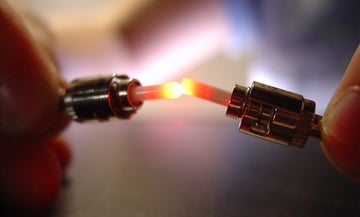
Longer Runs, Less Cost With RF Over Fiber Optic Conversion Systems
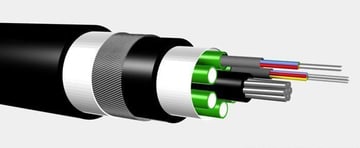
Multi-Mode vs. Single-Mode Fiber-Optic Cable: Debates and Differences
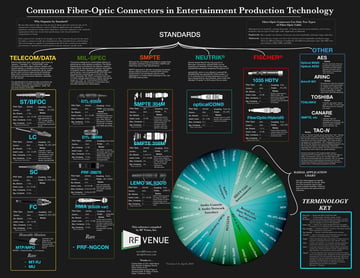
Every Fiber-Optic Connector Used in Entertainment Production in One Giant Infographic
Subscribe to email updates
Stay up-to-date on what's happening at this blog and get additional content about the benefits of subscribing.

